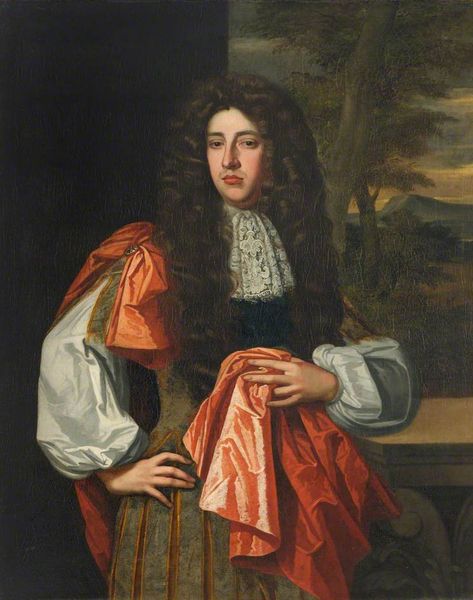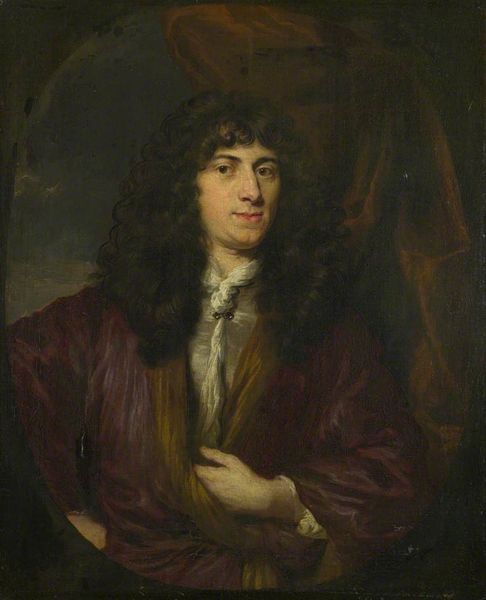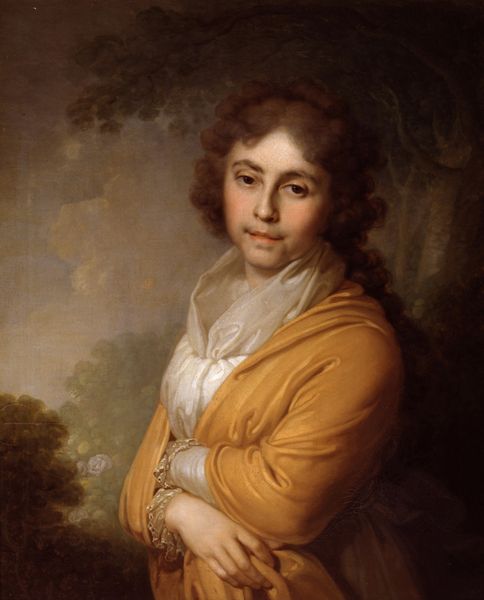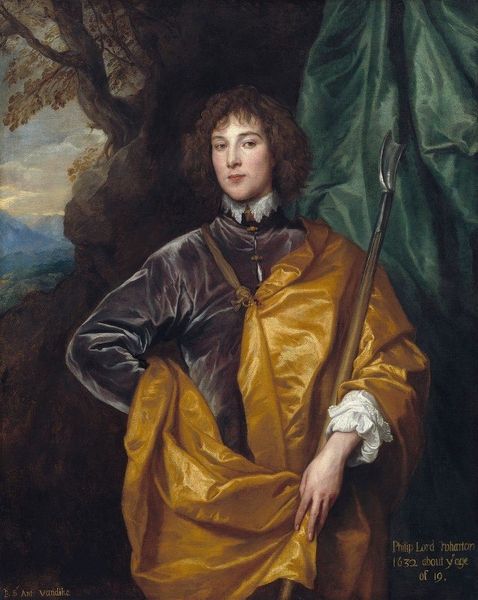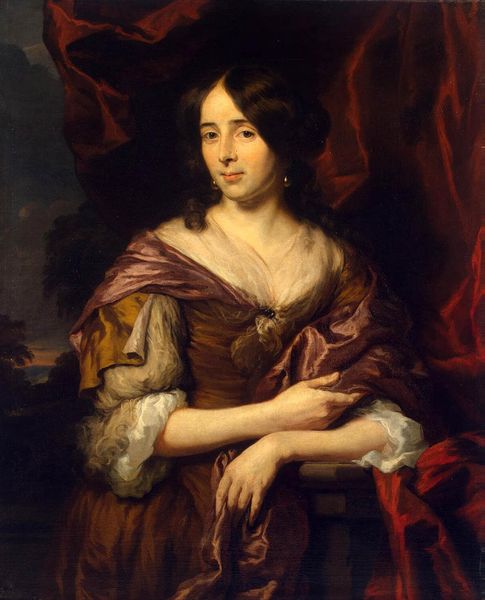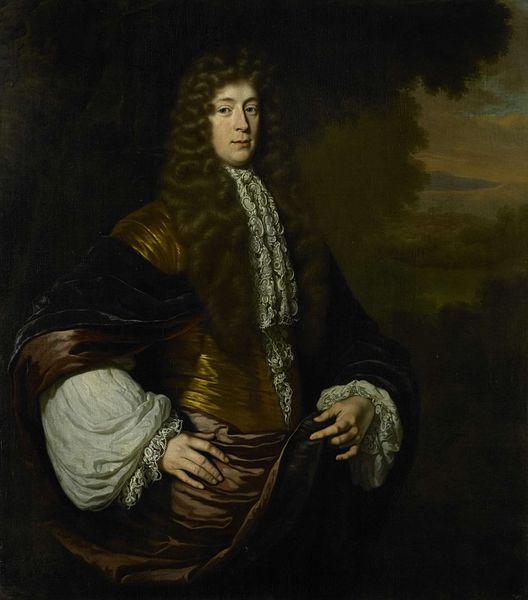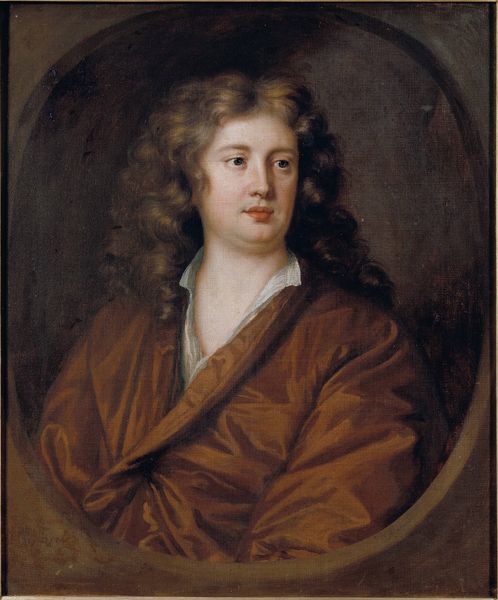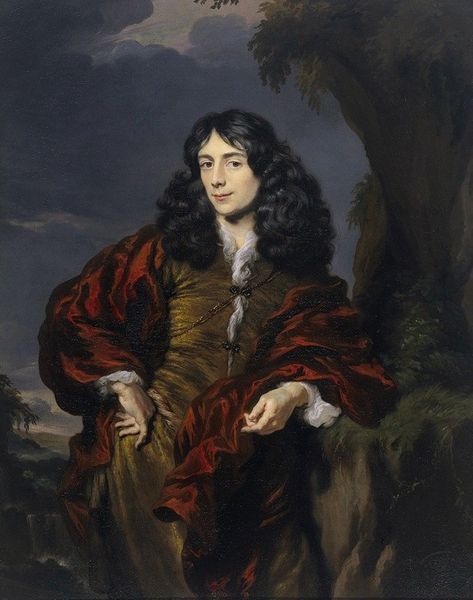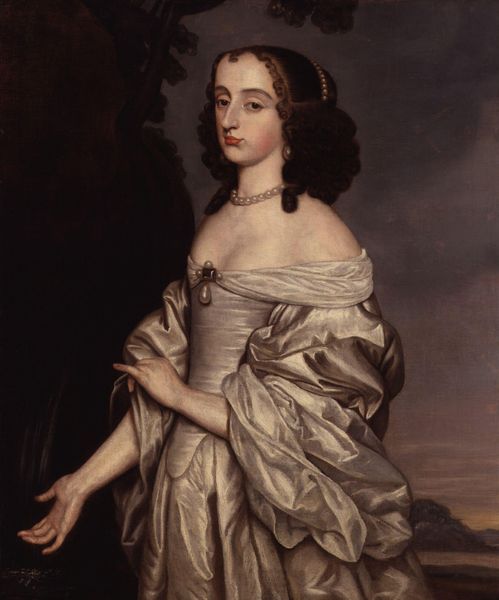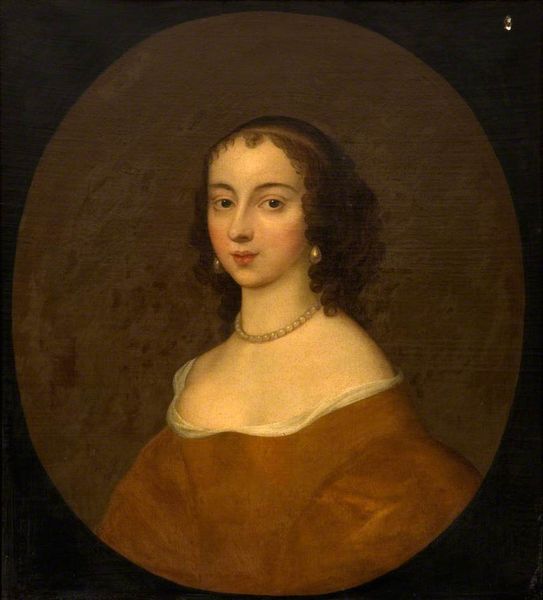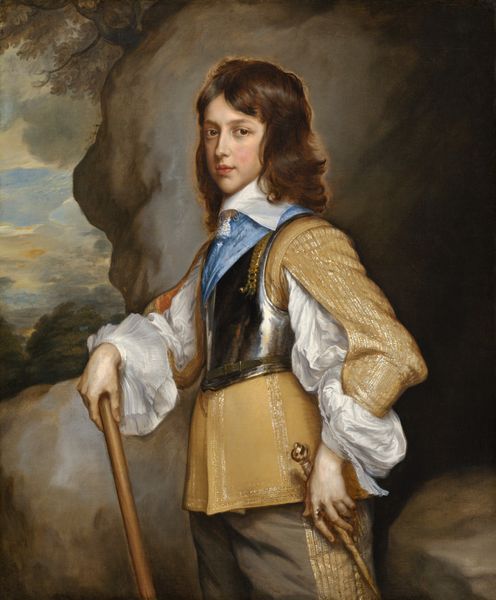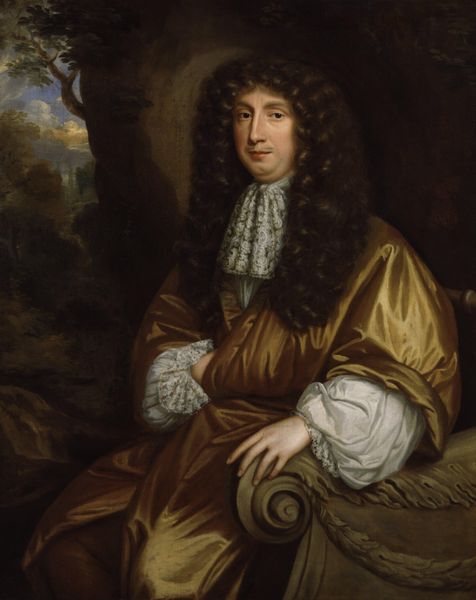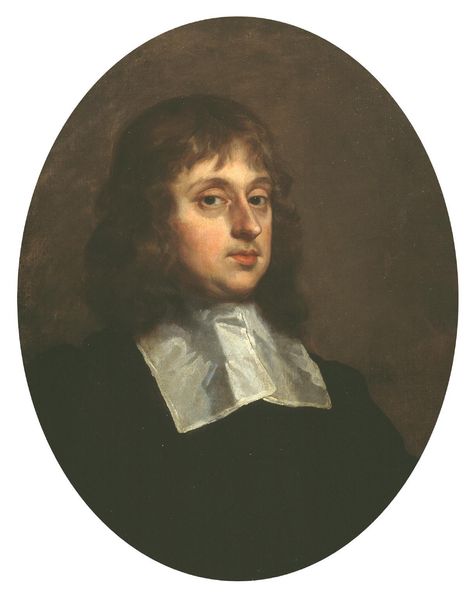
painting, oil-paint
#
portrait
#
narrative-art
#
baroque
#
painting
#
oil-paint
#
figuration
#
history-painting
Copyright: Public domain
Curator: Nicolaes Maes, who spent time in Rembrandt’s studio, likely painted this portrait of an adolescent male during the Baroque era. Entitled "Boy with a Spear," it's executed in oil paint. Editor: My first impression is the palpable sense of theatricality – almost as if he were a character plucked straight from the stage. The lighting dramatically emphasizes his poised gesture. Curator: The manipulation of light, or chiaroscuro, is essential. Notice the concentrated light falling upon the face and the gesturing hand, contrasted with the somber earth tones. Maes uses light not just to illuminate but to sculpt the form. Editor: I agree, and I am struck by the costuming as well. Look at that flowing lace collar and ornate black vest. There’s a subtle tension here: the subject, clearly a boy, presented in attire suggesting someone of noble status engaging with notions of performative masculinity. What’s fascinating is the almost androgynous nature of his features and the languid quality in his gaze, adding a modern spin of thinking of identity. Curator: From a formalist perspective, the composition leads your eye on a deliberate path. From the brightly illuminated hand, it flows up through the delicate lines of his profile to the horizon of the background and the subject's expression. Maes structures this in order to orchestrate how we approach the artwork, giving it narrative weight and guiding interpretation. Editor: Definitely. The artwork might be seen as commenting on power structures within the family, given the ambiguity of the child's posture of strength with the spear but an appearance that may challenge conventional ideals. It invites considerations about the representation of young masculine figures during the time in contrast to modern ideals. Curator: I can’t help but see this work in relation to Dutch art theory where artists considered capturing not just outer resemblance, but also some deeper "inner state" of their subject, something about the person's character, but doing so by appealing to general classical precedents in rhetorical posture and idealizing features. Editor: True, but by interrogating how such portrayals reinforced socio-political stratifications through symbolic languages and visual cues—that opens possibilities for considering wider issues of power imbalances within art. Curator: A compelling observation! In its quiet intensity, "Boy with a Spear" leaves us pondering not just Baroque visual techniques, but how the artist brings a life of its own through this portrait. Editor: Absolutely. The way identity and performance entwine to give the art historical canon new possibilities remains potent.
Comments
No comments
Be the first to comment and join the conversation on the ultimate creative platform.
